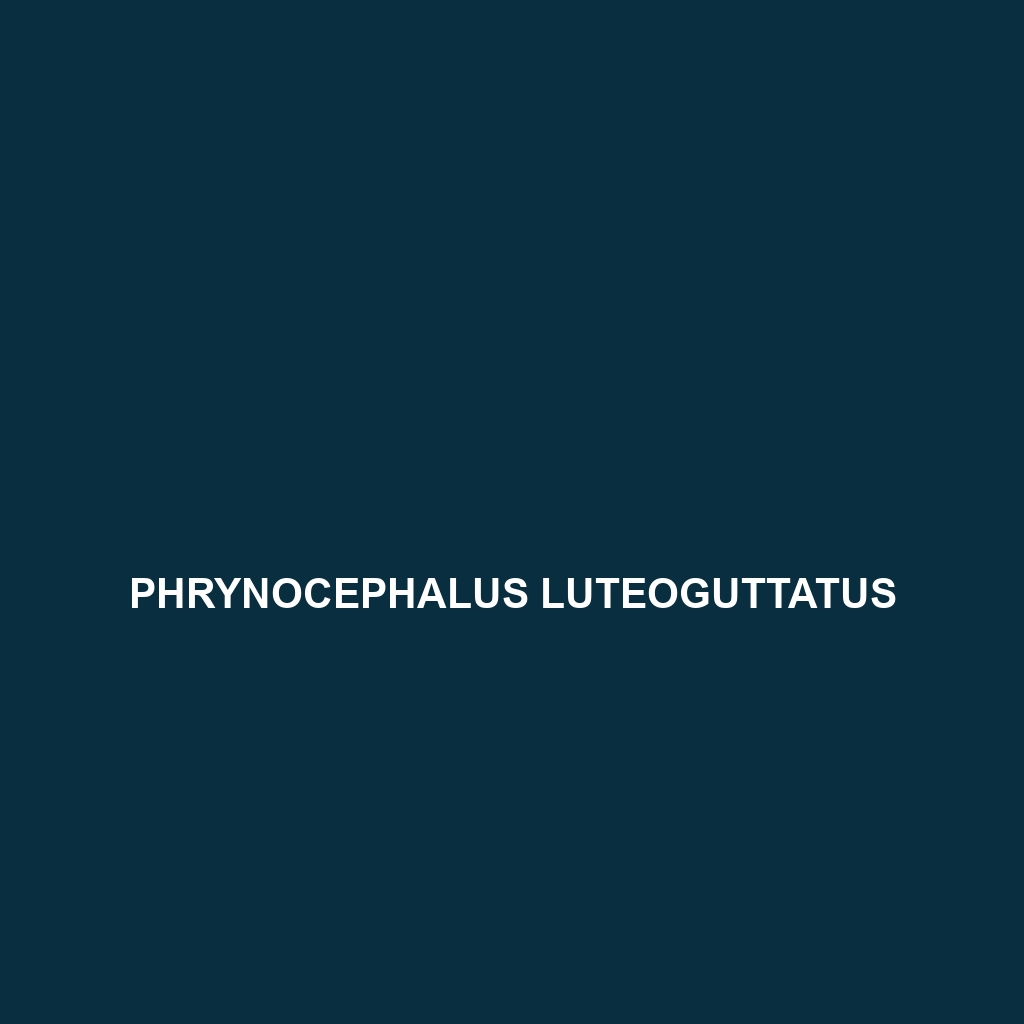Common Name
Phrynocephalus luteoguttatus
Scientific Name
Phrynocephalus luteoguttatus
Habitat
Phrynocephalus luteoguttatus, commonly known as the yellow-spotted toad-headed agama, primarily inhabits the arid regions of central and southwest Asia. This species is predominantly found in countries such as Kazakhstan, Uzbekistan, and parts of Turkmenistan. The preferred environment for Phrynocephalus luteoguttatus includes rocky outcrops, sparse vegetation, and sandy dunes, where it basks in the sun during the day. These habitats can be characterized as semi-arid, receiving minimal rainfall and exhibiting a climate that swings between extreme heat during the day and cooler temperatures at night, making it crucial for the species’ thermoregulation.
Physical Characteristics
Measuring between 20 to 25 centimeters in length, Phrynocephalus luteoguttatus displays an elongated, flattened body well-adapted for life in sandy environments. The distinctive coloration features a combination of sandy yellow with prominent black spots, allowing it to blend seamlessly into its desert surroundings, enhancing its camouflage against predators. Its head is broad and flattened, characteristic of toad-headed agamas, with large, expressive eyes enhancing its vision. A notable feature is its ability to change its color slightly in response to changes in temperature, an adaptation that aids in thermoregulation.
Behavior
Phrynocephalus luteoguttatus exhibits diurnal behavior, being most active during the day. This species utilizes basking as a method to regulate its body temperature, often seen sunning itself on rocks or sandy substrates during the morning and late afternoon. Social interactions among individuals are typically characterized by territorial displays, especially during the mating season. Courtship rituals include intricate movements and displays of coloration to attract mates, showcasing their evolved behaviors. These lizards are generally solitary, but can occasionally be seen in small groups around favorable basking locations.
Diet
As an insectivore, Phrynocephalus luteoguttatus feeds primarily on a variety of insects, including beetles, grasshoppers, and ants. Their hunting strategy includes ambush tactics, where they remain motionless until their prey approaches within striking distance. This lizard is also known to consume occasional plant matter, particularly in harsher conditions where insects may be limited. The ability to adapt its feeding habits is crucial for its survival in the fluctuating environments it inhabits.
Reproduction
The mating season for Phrynocephalus luteoguttatus typically occurs in late spring to early summer, coinciding with the warmest temperatures. Males engage in display behaviors to attract females, which may include head bobbing and extending their limbs. After successful mating, females lay clutches of 4 to 10 eggs in sandy burrows. The incubation period lasts approximately 6 to 8 weeks, depending on environmental conditions. The hatchlings are independent from birth and exhibit behavioral traits similar to adults, enabling them to adapt quickly to their surroundings.
Conservation Status
As of the latest assessments, Phrynocephalus luteoguttatus is classified as least concern on the IUCN Red List; however, habitat destruction and climate change pose ongoing threats. High rates of desertification and human encroachment into their natural habitats could lead to a decline in their populations if current trends continue. Conservation efforts must focus on habitat preservation and creating awareness about the ecological importance of this species.
Interesting Facts
One of the intriguing adaptations of Phrynocephalus luteoguttatus is its ability to perform a unique defensive behavior known as “waving”. When threatened, this lizard can wave its limbs in a sweeping motion, creating a distraction to confuse predators. Additionally, their exceptional camouflage not only protects them from larger animals but also allows them to ambush their insect prey effectively.
Role in Ecosystem
Phrynocephalus luteoguttatus plays a vital role as both a predator and prey within its ecosystem. As an insectivore, its hunting of various insect species contributes to controlling populations that might otherwise become overwhelming. Conversely, this lizard serves as a food source for larger predators, such as birds of prey and snakes, hence maintaining a balanced food web. Its presence is crucial in sustaining the health of the semi-arid ecosystems it inhabits.
